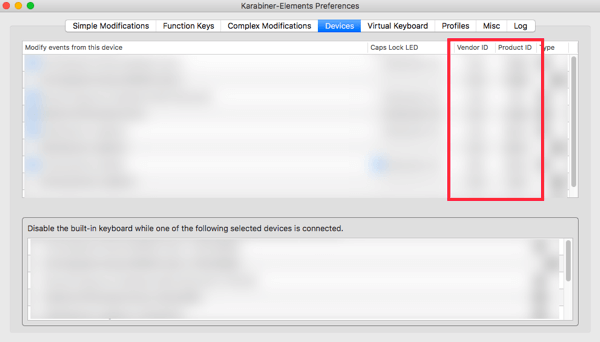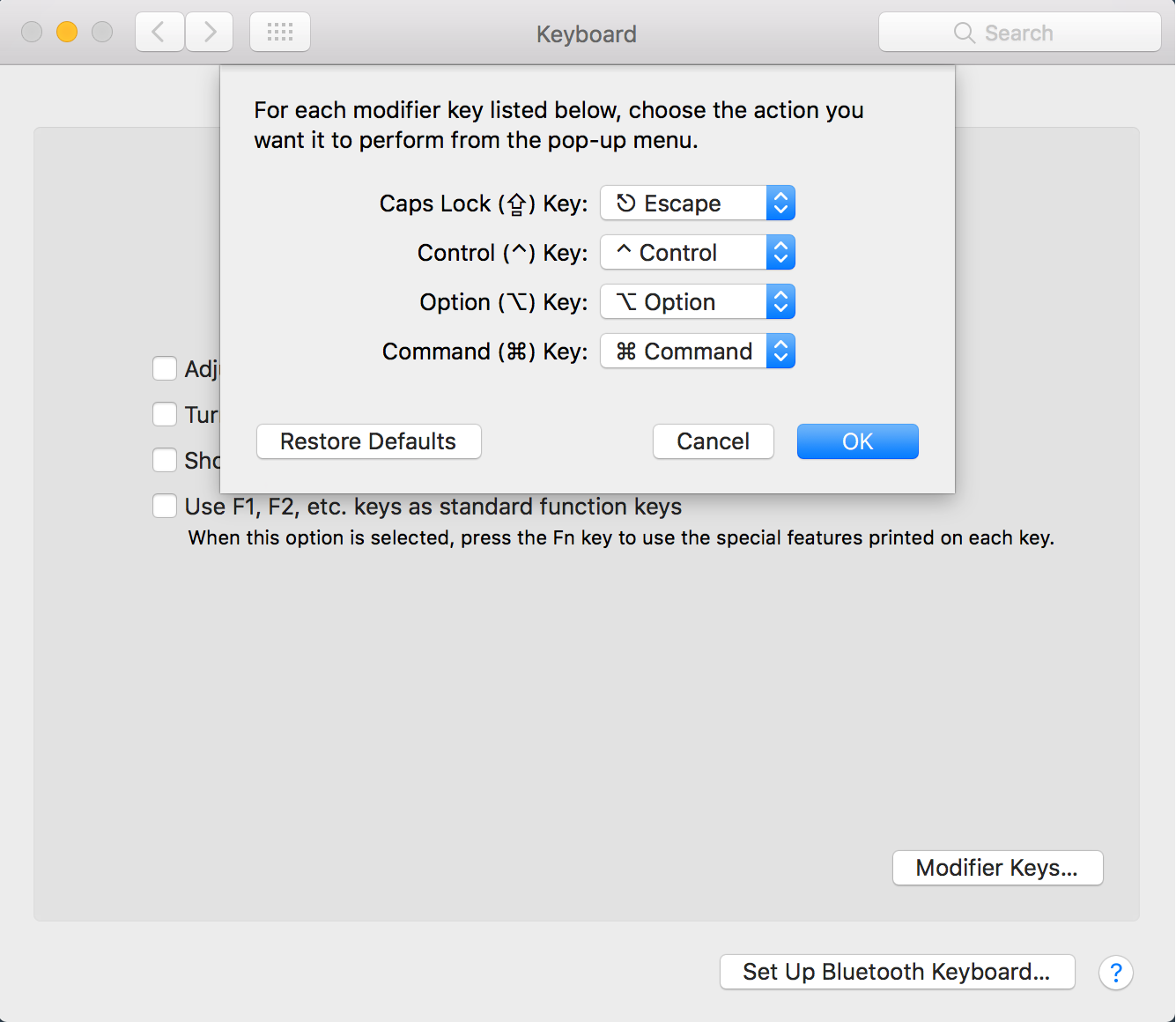
- #Karabiner elements key codes how to
- #Karabiner elements key codes install
- #Karabiner elements key codes full
- #Karabiner elements key codes mac
#Karabiner elements key codes full
I’ve hooked up a full sized keyboard and programmed all the keys to be shortcuts. On my work machine I’ve taken that idea one step further.
#Karabiner elements key codes mac
I previously wrote that I bought a gamepad keyboard, hooked it up to my Mac and configured it with Karabiner-Elements. Of course my actual o key definition doesn’t just have a binding for :n key.AugSetting up a secondary macro keyboard with Karabiner-Elements And I get an Alfred prompt show up just as I programmed my keyboard to do this:

So I can still type things away (like this article I am writing) but if I ever want to search curated lists with a workflow, I press o key briefly and whilst not releasing it, press n key. But that short snippet actually defines a hyper key only now this hyper key lives on the actual keys you type on. Goku syntax is odd, I agree, it’s optimized for typing less (thus iterating on config faster), not necessarily clarity.

Then Paste this inside and save the file: Open ~/.config/karabiner.edn file in your favorite editor (create it if doesn’t exist). But holding onto the caps lock key now does nothing useful. Pretty useful given that new macbooks don’t even ship with a physical escape key (although it was too far away anyway and TouchBar is genuinely useful). Of course we could have done that in Goku configuration itself too but since macOS gives us ability to do it in settings, let’s use that.Īssuming you’ve done that and everything worked, you can now press caps lock key and instead of going into caps lock mode, you will trigger escape instead.
#Karabiner elements key codes install

#Karabiner elements key codes how to
Inside it there are definitions for how to make all of my QWERTY keyboard (minus some letters and delete/return keys because those are too far from the hjkl hand position) into custom hyper keys. Here is a gist of what my Karabiner configuration looks like in JSON format. The problem with using JSON to define Karabiner rules is that it gets unwieldy complex and nearly impossible to edit by hand. It is not enough to talk about this and praise how game changing this concept is in using a computer until you try it though. Like the useful caps lock I mentioned earlier but applied to every other key on the keyboard. The most powerful of which is the ability to create custom hyper keys. Karabiner Elements uses JSON to define rules which lets you program keys in various ways. This article is about how to take this idea of a hyper key and apply it to every key on your keyboard using Karabiner and a special DSL named Goku that makes editing your Karabiner configuration a breeze. With that article, the notion of a hyper (dual purpose) key was born but most people seemed to have stopped there. That is you could remap caps lock to act as escape key when pressed alone and some four/five key modifier when held together. I found out about the power of Karabiner by reading an old article on how you could remap caps lock key into a key that’s actually useful. Karabiner is a low level macOS kernel extension that gives you a virtual keyboard you can heavily customize to your own liking.


 0 kommentar(er)
0 kommentar(er)
